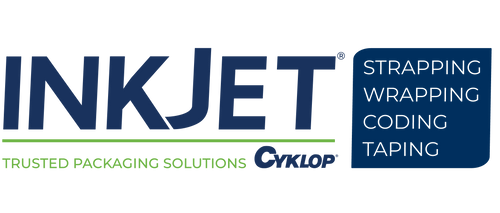Different IP Ratings for Industrial Marking Solutions: What They Mean and Why They Matter
Product coding is often performed in harsh environments. Extreme temperatures, vibrations, high moisture levels, and other elements can easily disrupt the marking process and damage unprotected hardware. Disruptive environmental factors are particularly common in:
- Food packaging plants that require cold temperatures and frequent washdowns.
- Wire and cable extrusion facilities that experience high heat and utilize industrial-speed production lines.
- Automotive and aerospace part manufacturing plants that produce dust as a result of their processes.
In these spaces and others, it is essential to use coding and marking solutions that are capable of withstanding any threatening environmental factors. One of the best ways to do so is to invest in IP-rated equipment.
IP stands for “ingress protection,” and each rating communicates two things:
- How well a machine is fortified against dust ingress
- How well a machine is fortified against water ingress
In this ingress protection guide, we analyze the different IP ratings used today, explain their significance, and call attention to the environmental resilience displayed by today’s coding and marking solutions.
The Meaning Behind Different IP Ratings
IP ratings are defined by the International Electrotechnical Commission in IEC 60529. The goal of IEC 60529 is to set a standard by which to grade electronic enclosures on how well they prevent the intrusion of dust and liquid.
IP ratings are composed of two digits and follow the format of IPXX (e.g., IP66 and IP55). The digits refer to two different ingress protections:
- The first digit grades the unit’s protection against dust and other solid airborne particle intrusions. The rating scales from 0 (meaning no protection) to 6 (complete protection).
- The second digit grades the unit’s protection against liquid intrusion. The rating scales from 0 (meaning no protection) to 9 (complete protection against hot, high-pressure water jets from every angle).
The table below breaks down the individual grades for dust and solid particle ingress protection:
|
|
|
|
|
|
|
|
|
|
|
|
|
|
|
|
|
|
|
|
|
|
|
|
This table breaks down the individual grades for liquid ingress protection:
|
|
|
|
|
|
|
|
|
|
|
|
|
|
|
|
|
|
|
|
|
|
|
|
|
|
|
|
|
|
|
|
|
Modern Marking Technologies and Their Environmental Fortifications
Product coding can be completed with a range of technologies. Today, the most common solutions include:
- Continuous inkjet (CIJ) printers, ideal for high-speed production line coding.
- Thermal inkjet (TIJ) printers, compact, cost-effective machines that create high-quality prints.
-
CO2 laser, fiber laser, LDR laser, and UV laser marking machines, diverse systems that can create intricate graphics and images, as well as complete high-speed coding.
CIJ printers and laser marking machines are often built with substantial environmental protections.
Both CIJ and laser systems are frequently used to complete demanding applications in harsh industrial environments. To ensure that potentially disruptive elements do not cause downtime or damage hardware components, CIJ printers like the DuraCode Touchscreen, DuraCode Keyboard, and DuraCode Pigment Printer are built with IP55 enclosures. Similarly, InkJet, Inc.’s laser portfolio includes systems that are protected by IP66 cabinets.
In general, TIJ printers do not offer the same level of protection. Most TIJ printers are affordable machines that are not intended for use in difficult environments. As such, they are not built with protective cabinets like CIJ printers and laser systems.
However, there are exceptions. High-end TIJ printers like the new Anser A1 and Anser X1 (pictured to the side) not only print at CIJ-level speeds but are fortified for long-term operation in harsh environments. For dependable results, the Anser X1 features IP66 housing and a wide operating temperature range of 32-104° F (0-40° C).
Searching for a Resilient Coding and Marking Solution? InkJet, Inc. Can Help You Find It
To avoid downtime and prevent coding mistakes, it’s important to use a marking solution that can withstand any potentially disruptive elements within your facility. At InkJet, Inc., we carry numerous coding/marking technologies to meet the needs of different industries and facility environments.
Our fortified CIJ, TIJ, and laser systems offer IP ratings as high as IP66, and our specialty ink formulas are designed to complete conventionally challenging applications. Contact us today to learn which hardware and ink combination will work best for your needs.
For more information about the different IP ratings and other industrial printing specs, contact InkJet, Inc. online or call 1(800) 280-3245.



